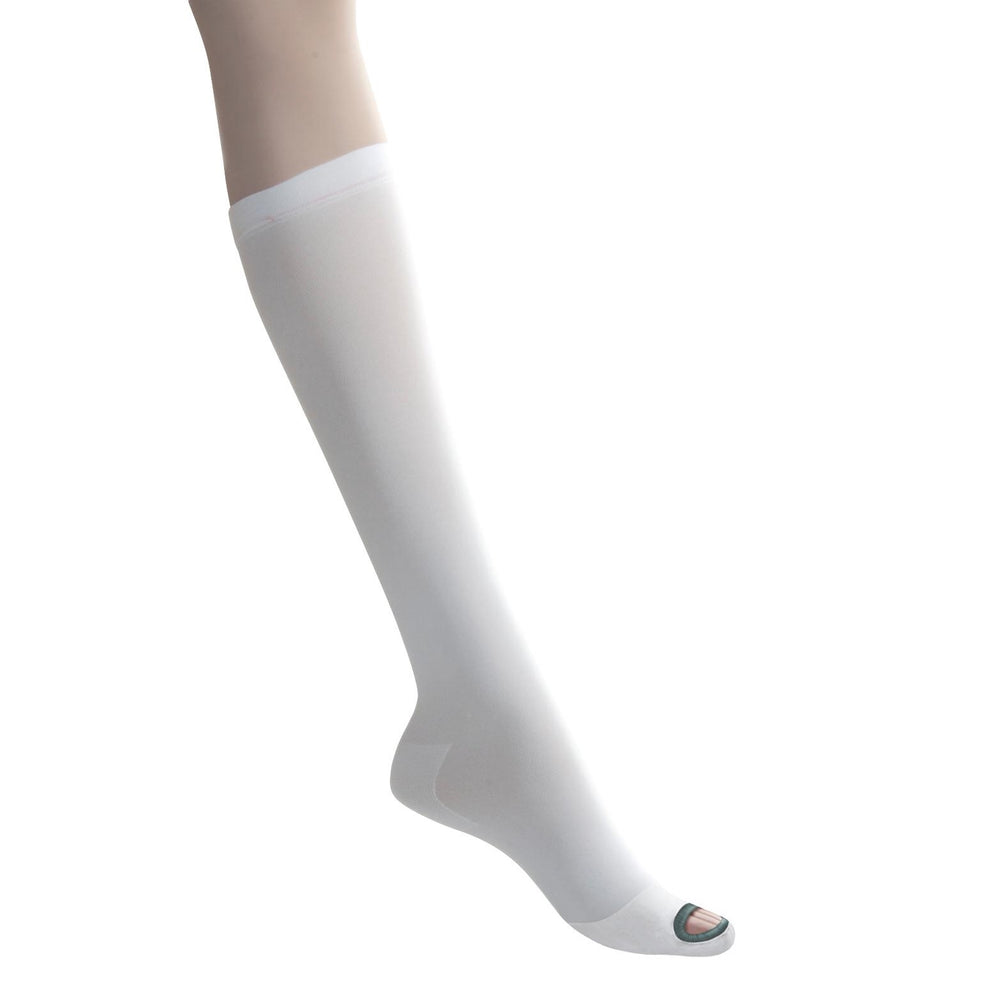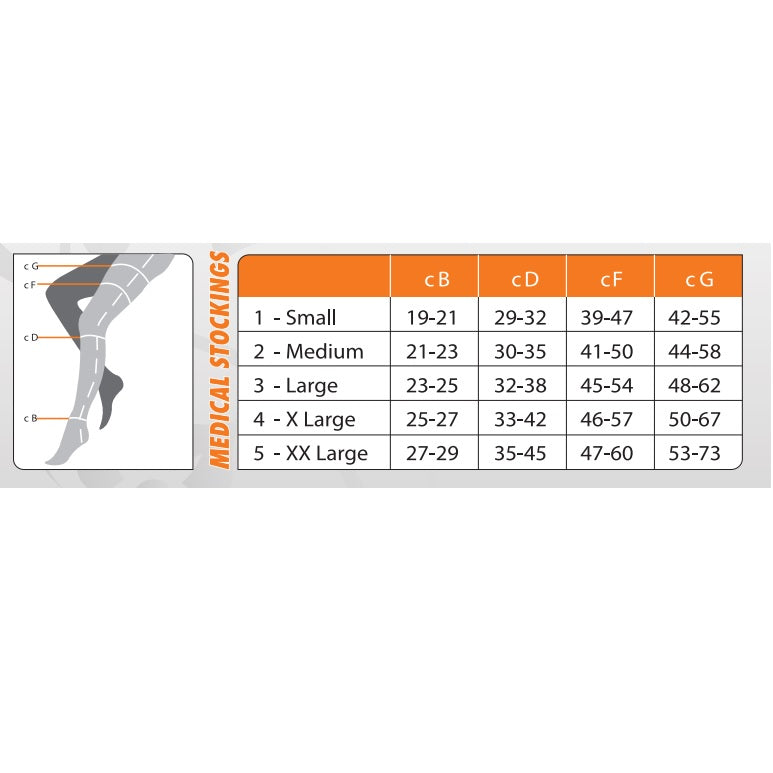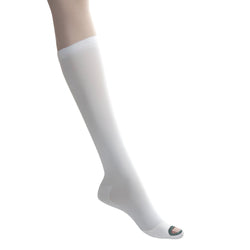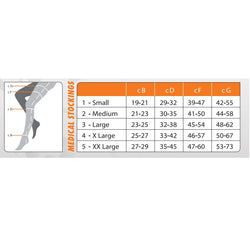Anti-Embolism Compression Stockings
Knee High
Colour: White
Sold as a pair.
Closed Toe
Sizing:
Please review the product image for how to measure sizing in cm.
What is an anti-embolism stocking?
Anti-embolism stockings help to put pressure on your legs, improving circulation and thus reducing the chance of a blood clot. Many people who have had surgery on their legs and need to stay in bed are given these stockings as a safety measure.
What is the difference between Medical compression stockings and anti-embolism stockings?
The biggest difference between Anti-Embolism Stockings and Medical Compression Stockings is the compression level and the medical reason for which it is worn. Anti- Embolism Stockings are usually graduated compression from 18–8mmHg as you progress up the leg. Medical compression stockings are a medically-measured 15–20mmHg or higher.
Anti-embolism stockings are clinically proven to reduce DVT1 and to promote increased blood flow velocity in the legs. Anti-embolism stockings have also been shown to prevent the damaging effects of venous distension that occurs during surgery.
Anti-embolism stockings apply the clinically-proven graduated pressure pattern of 18mmHg at the ankle, 14mmHg at the calf, 8mmHg at the popliteal, 10mmHg at the lower thigh and 8mmHg at the upper thigh.
It is important to measure the patient’s leg size to assure that the appropriate pressure pattern is applied. Please see the sizing chart in the product images.
People sometimes use the terms anti-embolism socks and compression stockings interchangeably, but these are actually different products with different uses. Anti-embolism socks are suitable for individuals who must remain in bed, while compression stockings are best for people who have more mobility.
Compression stockings exert stronger pressure on the legs, so people should not use them in place of anti-embolism socks. Instead, they are an appropriate choice for individuals with varicose veins or lymphedema.
Some compression products are available over the counter. These include flight socks, elastic support stockings, and athletic compression socks. These items usually provide less compression than anti-embolism socks, and the pressure is typically uniform rather than graduated.





